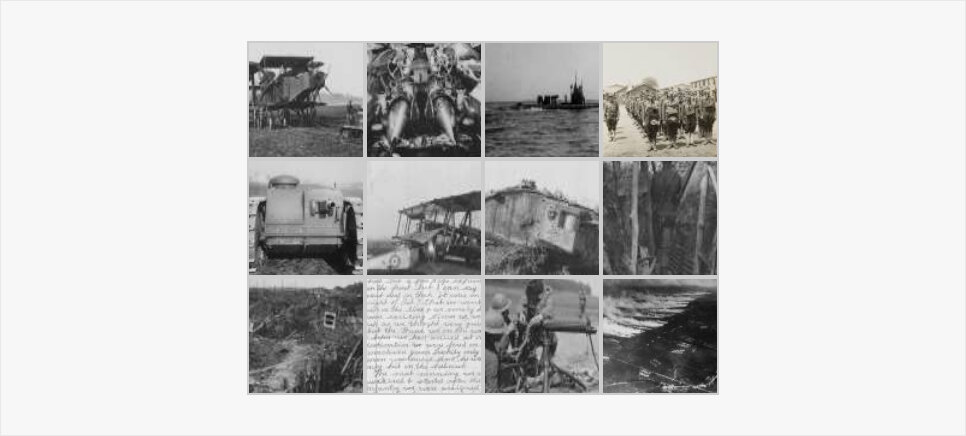In this activity, students will match primary sources to visualize new military technologies that emerged or were impactful during World War I. Once all of the matches have been made, students will read an eyewitness account of the war and reflect on how technological advances affected the outcome of the war and increased the scale of destruction.
Suggested Teaching Instructions
Use this activity when teaching about World War I or new technology. Students will compare photographs and documents, identify new technologies, and reflect on the impact of technology on war. For grades 7-12. Approximate time needed is 25 minutes.
Students can complete the activity individually or in pairs, or it can be used in a full-class setting.
To begin, display the activity for the entire class and choose one document from the grid with which to model
document analysis. Click on the orange "open in new window" icon for a larger view.
Ask students to complete the activity on their own, performing similar analysis with each document they click on. The activity will instruct students to match the documents according to six technological advances of World War I. Each match represents one technology:
- Tanks
- Chemical warfare or Poison gas
- Fortified trenches (including barbed wire, concrete, etc.) (Note that trenches had long been used in war.)
- Airplanes (Note that airplanes had been used in war before, but WWI was the first major conflict in which their use was widespread.)
- Machine guns
- Submarines
After students make all of the matches, they will see an excerpt of a
letter from an American soldier named Wayne, serving in France during World War I, to his "folks." The letter offers a detailed eyewitness description of the war and its atrocities. Through his perspective, students have a glimpse of the impact of "total war" on those involved and the increased scale of destruction during World War I.
Then they should click “When You're Done” to answer follow-up questions. Conduct a class discussion about their answers to these questions:
- The new military technologies used in WWI could destroy more lives and property much faster than in previous wars. Based on the American soldier's letter that you read after making your matches, what it was like to be in the war, surrounded by these weapons?
- What impact do you think this more destructive warfare had on the people fighting and the places where the war was fought?
- In your opinion, which technology probably had the biggest impact on later wars after WWI? Was this a good development or would the world have been better off without it?
To extend this activity, you can introduce students to other new technologies or changes in society that emerged during WWI. See for example:
Ask students: Beyond war, which technology do you think impacted (or maybe continues to impact) the world the most in our everyday lives?





